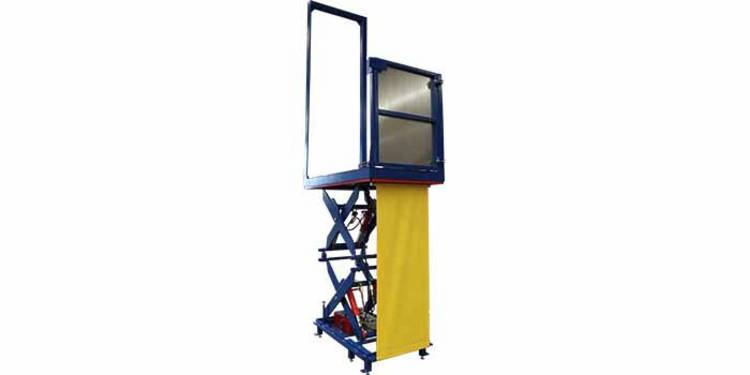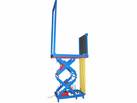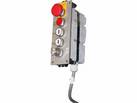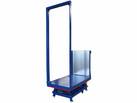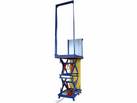Loading lift tables are usually used to compensate for height differences between the road and the loading ramp of a truck or hall. For this reason, loading lift tables are often found in outdoor areas. However, our customer was looking for a loading and unloading solution indoors ...
Description of application
In a government office, files must regularly be stored in the archive. As the archive is located in the basement and could only be reached by stairs, employees had to physically carry the files to the archive. This is not only physically strenuous, but also very time-consuming. The inexpensive alternative: our loading lift table. This is now located directly next to the stairs and can be loaded with the help of a platform trolley. This way many files can be comfortably brought to the archive at the same time.
Visual effect
Because the loading platform is installed in the building, certain visual requirements had to be met. One point concerns the control unit. We use surface-mounted control units as standard. These can be easily mounted on the wall. However, flush-mounted installation provides a more pleasing visual effect. The control box is inserted or hidden in the wall leaving only the user interface visible. The photo of our flush-mounted control unit below gives you an idea what the flush-mounted version looks like.
We also provided edge protection for the pit. This prevents concrete from crumbling around the edges of the pit. The pit edge protection consists of a steel angle frame with tie bolts. The tie bolts are required to anchor the pit frame firmly in the concrete.
Safety
To prevent someone from falling from the top landing into the basement when the lift table is retracted, a gantry has been provided on one narrow side of the platform. The crossbar of the gantry serves as a railing post. The platform door on the opposite side was provided as fall protection during the loading process. It is electromechanically secured and can only be opened when the scissor lift table is at the very bottom.
Due to the fact that the operation is designed as dead man's control and because the operator cannot completely see the hazard area underneath the platform during lifting and lowering, there is a PVC roller screen on the narrow side underneath the platform door. The roller screen is intended to prevent people from entering the hazard zone.
Another safety plus is the platform with chequer plate. Because people walk onto the platform for loading and unloading, the risk of slipping must be reduced as much as possible. In comparison to a platform with smooth sheet metal, the chequer plate provides better slip resistance.
The stops at the top landing, on the other hand, have less to do with safety and more with increased comfort. The stops prevent deflection when the load is transferred, so that no edge is created between the landing and the platform. This allows the platform trolley to be pushed onto loading lift table without effort.

